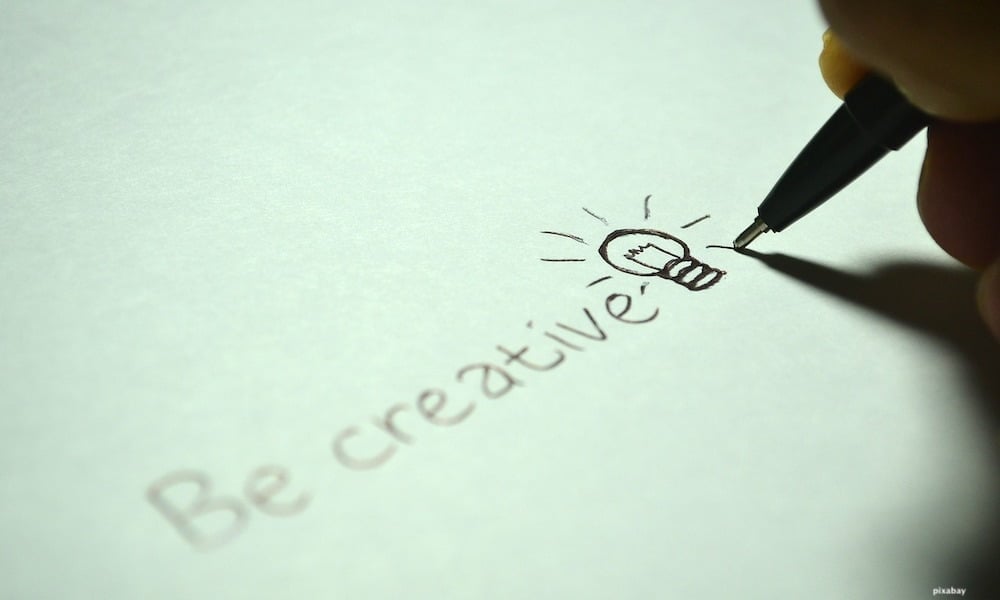Marketing
5 Steps to Create a Unique Logo for Your Blog

Stop for a moment and think of your top five favorite brands.
What is the first image that pops into your mind?
Is it the owner behind each brand you like?
Or maybe the short description they give on the box of the product?
Perhaps it’s the last ad or social media campaign they released, and you saw while scrolling Facebook on your way to work?
Well, if you’re like most people, the first image that will pop into your mind will be their logo.
The lines of Adidas.
The special font that makes for Coca-Cola’s logo.
The (in)famous apple of…Apple.
The human brain is “built” to recognize images a lot faster than it recognizes words (like taglines, mottos, or even brand names when they are just getting acquainted with your brand). To be more specific, we recognize images 60,000 faster than words (or even sounds).
Even more, business logos have grown so notorious that 82% of the business investors out there actually analyze a company’s logo before making the final call on whether or not they should invest in that specific business.
In a world full of global brands, it has grown to be more than “just” important to create a logo that’s relevant for your business and memorable for your consumers – it is crucial for the success of your business that you do this.
But how do you create a logo that stands out? And even more specifically, how do you create a logo for your blog, when that is your main business?
We have some tips for you – so read on and find out more.
Run a Thorough Research
Every business move should start with proper research – and your logo makes no exception from the rule.
Your logo creation process should stem from the right data and information – and that cannot be done without a thorough research.
Your pre-logo creation research should include multiple facets:
- Your blog’s niche and the industry behind it;
- Your audience (who are they, what are they most likely to appreciate and remember, etc.);
- A SWOT (Strengths, Weaknesses, Opportunities and Threats) analysis of your blog’s brand
- A SWOT analysis of your competition’s blogs;
- Colors (what they mean, what they are associated with, etc.). For instance, did you know that 33% of the top brands in the world use blue in their branding efforts (which includes the logo as well)?
Take your time with this – it’s not something you want to rush through. At the end of the day, your logo will be there to stay (especially since you want to avoid any kind of major changes to it while your brand is still shaping up). Yes, it might take a bit of time to gather all the data and draw the insights – but once that’s done, you can proceed to actually create the logo.
Decide How You Want to Do This
When it comes to logo creation, you have two main options:
- Hiring a designer to do it;
- Doing it yourself, using tools such as this one.
The first option is easier on you because it will allow you to work with an actual professional. You can hire a renowned designer or a designer that has been recommended to you by peers. Theoretically, you can also hire a freelancer online (using platforms such as Fiverr and UpWork, for instance). However, going down this path can be quite tricky, since not all freelancers are what they market themselves to be and they don’t always take the actual time to create excellent deliverables.
If you decide to do this yourself, it is important to find a tool that allows you to do this as easy as possible. Since you will be paying for this service, you might also want to consider whether or not it offers you anything else, other than the logo creation process (e.g. they might provide you with video creation tools as well). This option can be very affordable, and it can yield excellent results when done the right way.
Pick the Main Elements
A logo is supposed to be very easy to recognize and it shouldn’t be too complex. However, it should encapsulate everything your blog represents – from the niche you are approaching to your views on the industry.
The main elements you should consider when creating a logo are the following:
- Color – choose something that resonates with both your blog’s brand and your readers (e.g. black may be too harsh if your blog focuses on DIY crafts or cooking recipes, but it could work when incorporated elegantly for a blog that focuses on high-end luxury products);
- Font – not all logos include fonts in them, but if you want your logo to actually “say” something, you should definitely consider a nice font as well. Generally, you want to stay away from the all-too-common fonts because they have been used a thousand times before. Look up some font trends and pick a font that will stay fresh and unique one, two, and ten years from now too.
- Special effects – do you want to use shadows and gradients on your logo? These small details can make a world of difference, but it is imperative to only include them if your brand resonates with them. For instance, if you plan on writing about frugal living, gradients and shadows that go too deep might not feel appropriate because they will “burden” the logo, making it feel incompatible with the idea behind your blog.
- Icons – this is where the essence of your blog lies. You should select an icon that’s representative for your blog’s niche, but you should also make sure to stay away from the icons that have been used too many times before. For example, if you write about eco-friendly lifestyle solutions and you use a leaf or a recycling sign as your main icon, your audience might feel that they have seen that before on too many occasions and they will not perceive you as a unique thought leader in your industry.
Create the Actual Logo
Once you have all the information and the basics set, it is time to proceed with the actual logo creation process.
If you have chosen to work with a designer, you should brief them about your expectations. Also, you should provide them with a sketch or two of what you are looking for, so that they know where to start. Keep in mind that this might be a back-and-forward process and they might have to send you multiple versions of a logo before you can actually settle on one.
If you have chosen to go the DIY path, you can sign up for something like Renderforest. In this case, you will have to go through a few simple steps:
- Telling us more about your business and industry. The more detail, the better, since this will allow us to select an icon design that suits you from the very beginning;
- Choose the typography that best suits your blog and your brand;
- Make your adjustments (in terms of graphics, color, typography, and so on). This step allows you to perfect your logo so that you can be 100% happy with the final result.
Test Your Logo
Before you glue your logo unto your blog, you might want to test it and see how people react to it. There are a few ways to go about this:
- Ask your friends and family what they think. Even if their feedback might be “professional”, it might still provide you with good insights on what could or should be changed about your logo.
- Run an A/B test. This is the more professional way to test a logo when you have multiple options. There are platforms that will allow you to do this for free in the testing period, enabling you to add your logo to the site without coding knowledge. Once the A/B test is done, you will be able to make an informed, data-driven decision on which logo suits your blog the most.
Remember, creating the perfect logo might be a time-consuming process. However, it’s more than worth taking your time with it! Re-branding efforts can be very costly, and they can make your readers feel confused (which might lead to them dropping your blog from their list of reads).
A logo can make or break a business – so don’t hesitate to invest in yours. It will make all the difference in the world!






